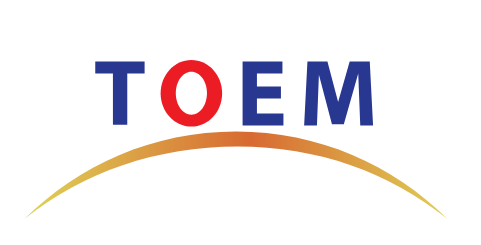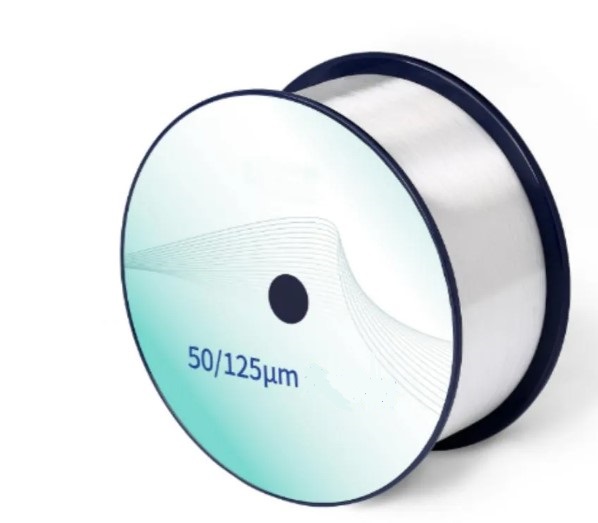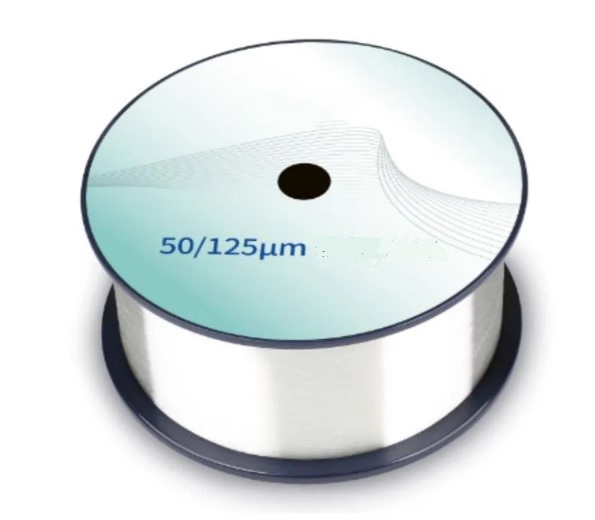Shanghai Gengyun Industrial Co., Ltd
Bend Insensitivity Curving Multi-Core OM2 Fiber
OM2 fiber, also known as gradient fiber, gradient refractive index fiber, is the fiber with gradient refractive index or gradient distribution of the fiber core area in the cross section (such as parabolic shape). The purpose of adopting the gradient refractive index fiber is to reduce the pattern dispersion of the multimode fiber.This fiber has small dispersion and bandwidth is 1~2 orders of magnitude larger than that of mutant fiber, which is suitable for medium distance fiber communication system.
OM2 (50 / 125 μ m) bending insensitive multimode fiber meets or exceeds ISO / IEC 11801-1 OM 2 specification, IEC 60793-2-10 A1-OM 2 specification and TIA-492AAAF A1-OM 2 specification.
Product Characteristics
- Using a proprietary double-layer UV-cured acrylate coating.
- Excellent microbending resistance.
- OM2 fiber used for tight sleeve optical cable performance is superior.
- Stable performance under multiple environmental conditions.
- Superior geometric consistency,Low attenuation
- At 850nm and 1300nm wavelengths with high bandwidth.
- Manufactured using the PCVD process.
- An extremely accurate refractive index profile.
Application
*LAN application video, audio;
*Data services are applicable to Gigabit Ethernet for laser or LED light sources;
*Support the use and installation of optical cables at a small bending radius;
Specifications of OM2 Fiber
| Features | Conditions | Data | Unit |
| Geometrical Features | |||
| Core Diameter | — | 50±2.5 | [μm] |
| Core out-of-roundness | — | ≤5.0 | [%] |
| Cladding diameter | — | 125.0±1.0 | [μm] |
| Non-circularity of cladding | — | ≤1.0 | [%] |
| Coating diameter | — | 245±7 | [μm] |
| Coating / cladding concentricity | — | ≤10.0 | [μm] |
| Non-circularity of coating | — | ≤6.0 | [%] |
| Core layer / cladding concentricity | — | ≤1.5 | [μm] |
| Fiber length | — | Maximum17.6 | [km/disk] |
| Optical characteristics | |||
| Damping | 850nm | ≤2.7 | [dB/km] |
| 1300nm | ≤0.6 | [dB/km] | |
| Full injection bandwidth | 850nm | ≥200 | [MHz·km] |
| 1300nm | ≥500 | [MHz·km] | |
| Full injection bandwidth | — | 0.275±0.015 | — |
| Group index | 850nm | 1.496 | — |
| 1300nm | 1.491 | — | |
| Zero dispersion wavelength | — | 1320~1365 | [nm] |
| Zero dispersion slope | 1320nm≤ λ0 ≤1348nm | ≤0.11 | [ps/(nm2·km)] |
| 1348nm≤ λ0 ≤1365nm | ≤0.001(1458-λ0 ) | [ps/(nm2·km)] | |
| Macro bend loss | — | — | — |
| 100 laps, with radius 37.5mm | 850nm | ≤0.50 | [dB] |
| 1300nm | ≤0.50 | [dB] | |
| Backscattering characteristics of 1300nm | |||
| Steps (average of bidirectional measurements) | — | ≤0.10 | [dB] |
| Irregularities and point discontinuity in the length direction | — | ≤0.10 | [dB] |
| Inhomogeneity of attenuation | — | ≤0.10 | [dB/km] |
| Environmental characteristics of 850nm and 1300nm | |||
| Additional attenuation of the temperature cycle | -60ºC~ 85ºC | ≤0.10 | [dB/km] |
| Additional attenuation of the temperature-humidity cycle | -10ºC ~85ºC,4%~98% relative humidity | ≤0.10 | [dB/km] |
| Immersion additional attenuation | 23ºC, 30 days | ≤0.10 | [dB/km] |
| Dry heat additional attenuation | 85ºC,30days | ≤0.10 | [dB/km] |
| Heat and heat attach attenuation | 85ºC and 85% relative humidity,30days | ≤0.10 | [dB/km] |
| mechanical properties | |||
| Screening tension | — | ≥9.0 | [N] |
| — | ≥1.0 | [%] | |
| — | ≥100 | [kpsi] | |
| Coating stripping force | Typical average stripping force | 1.5 | [N] |
| Peak force | ≥1.3,≤8.9 | [N] | |
| Dynamic fatigue parameter (nd, typical value) | — | 20 | — |


